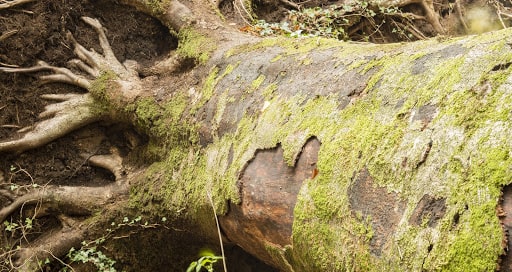When you look at a tree, it’s easy to find something to admire: the robust trunk, the rustling leaves, and maybe even some dainty flowers. In the fall, the leaves morph into a spectacle of warm colors. In the winter, the branches become home to freshly fallen snow.
Needless to say, there’s a lot to appreciate when you look at a majestic tree.
But what about the roots?
While you can’t always see them, the roots are as admirable as the rest of the tree. The root system, which anchors the tree to the ground, supplies the tree with nutrients and water. It also helps drain and aerate the surrounding soil.
So, take the time to learn how to avoid damaging your tree’s roots. By following these safety precautions, you can help your beloved tree thrive for years to come.
Don’t Overwater
When it comes to watering, it can be tempting to literally “shower” a tree with love. After all, as a crucial component of tree care, water is essential for healthy roots.
Yet, it’s possible to overdo it. If a tree is overwatered, the roots will suffocate and fail to take up nutrients. The excess water can also promote the growth of dangerous microorganisms and cause root rot.
Overwatering is especially detrimental within the first two years of planting a tree. During this time, the root system is still establishing itself in the soil, so it’s important to go easy on the water.
If you’re not sure how often you should water your trees, talk to a certified arborist at Friendly Tree.
Add Mulch Properly
Mulch can do so much more than “prettify” your landscape. When used properly, mulch can insulate the soil and lock in root moisture. It also prevents soil compaction, ensuring that roots can efficiently absorb nutrients and water.
But like watering, there’s a wrong and right way to mulch. For example, piling a “mulch volcano” against the trunk will rob the bark and roots of oxygen. It also encourages the growth of disease-causing fungi and bacteria.
Instead, you should apply mulch from the tree’s root flare. Apply the mulch in a 3 to 10-foot circle around the base and use a rake to spread it out. Additionally, the layer of mulch should be no more than 2 to 4 inches deep.
Never Cut Roots Yourself
Whether you’re adding more plants or building near trees, you might consider snipping roots to make more space. However, much like pruning leaves, trimming roots should be left to the professionals.
Some roots are necessary for the tree’s water flow, nutrient delivery, and stability. If these roots are cut away, the tree can die or fall over.
A certified arborist can determine which roots are safe to trim. They can also consider other important factors, such as the best time of the year to cut roots. (Yes, it matters!)
Avoid Pouring Concrete
If you’re building a new structure or sprucing up your landscape, you might want to add concrete or stone near a tree. Unfortunately, this can severely damage your tree’s root system, even if it’s already established.
Concrete and stone will suffocate the roots, making it impossible to absorb oxygen, water, and nutrients.
If you must add concrete or stone, talk to a professional concrete company. They can work with an arborist to figure out the best way to add concrete without harming the roots.
Treat Your Roots Well with Friendly Tree
While every tree and property are different, these tips will help you avoid damaging your tree’s roots. If you have questions — or if you want personalized guidance — don’t hesitate to contact Friendly Tree.
Our New Jersey certified arborists can provide root safety tips based on the specific trees you own. We also offer a range of professional tree services, including tree pruning and tree planting.
To schedule a consultation or get a quote, contact Friendly Tree at (973) 678-8888.



Recent Comments